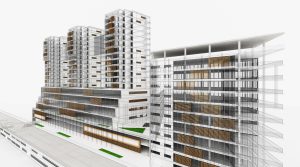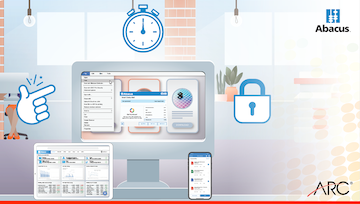By 2024, the building information modeling (BIM) market’s valuation is projected to reach $18.8 billion. In 2016, the market was valued at $3.6 billion.
Clearly, construction professionals are buying into BIM… but why?
Put simply, it’s the benefits of BIM—which include fewer reworks, improved collaboration, and much more.
Those benefits are the reason that architects, owners, and contractors are bringing BIM into the fold. Whether you’re using BIM or not—read on for the benefits that you need to know.
1. Reduced Reworks with Improved Constructability Analysis
When it’s used collaboratively by stakeholders, including the design team, general contractor, and key subcontractors, BIM prevents construction problems before they happen.
This article from Contractor Magazine cites a case in point:
A mechanical contractor was hired for a project at the University of New Mexico. They created a BIM model and at an early meeting with the rest of the project team, the model “identified more than 40 conflicts where the ceiling needed to be lowered to accommodate utilities.“
With a clear picture of the problem in front of them, the design team saw the need to make the  change and quickly approved a change order. More importantly, the entire team avoided what would’ve been a far more expensive, complicated issue had it not been caught in the design phase of the project.
change and quickly approved a change order. More importantly, the entire team avoided what would’ve been a far more expensive, complicated issue had it not been caught in the design phase of the project.
2. BIM is Scalable and Can Be Outsourced
Implementing new technology—even if it ultimately makes your company far more efficient—is a costly, resource-intensive process. You may need to bring in new employees with specialized skills or spend time and money training existing employees. If your company is spread out, you’ll need to repeat this process throughout the entire organization.
But with BIM, it’s actually possible to implement the technology and realize the benefits by outsourcing the work to a service provider. Large service providers like ARC achieve economies of scale by offering BIM services nationwide, allowing you to take advantage of BIM technology risk-free and for a fraction of the cost of implementing it in-house.
3. Centralized Information Eliminates Data Silos and Creates an Audit Trail
If you’ve ever found yourself struggling to navigate the data silos that arise (and multiply) as a construction project progress, you’ll love how a well-constructed BIM model centralizes all design and construction information.
When it’s done right and all stakeholders are involved from the outset of a project, the BIM model becomes the digital life story of a construction project. From early design concepts through the bidding process and construction, all project information is centralized, creating one repository with all as-built data.
But this centralized repository doesn’t just improve collaboration, it also creates a trail of information that’s easily accessible in the event of litigation. Considering how often construction projects end in litigation, this audit trail can become a significant risk mitigation tool.
4. More Flexible Design Changes
To fully understand how BIM enables flexible design changes, it’s important to understand that BIM is not just technology, it’s a new way of working. As Mohsen Toradi Ph.D. puts it in this paper, BIM is “a comprehensive concept of processes and tools which integrate all [the] project’s required data and information.”
By integrating project information into a BIM model, it’s easier to make design changes early on in the project—when they’re far less expensive and time-consuming. This is because, when fully utilized, BIM brings contractors together with the design team and the owner and allows each stakeholder to see the design concept in far greater detail and accuracy than is possible with 2D drawings.
In this way, owners can see the building and do a virtual walkthrough which enables them to provide feedback they’d otherwise be unable to based on drawings. Moreover, for contractors, the BIM model makes it far easier to detect and communicate constructability issues to the design team.
5. Shorter Project Life Cycles and Greater ROI
Every benefit above leads to BIM’s greatest benefit: return on investment.
By shortening project lifecycles, reducing reworks, centralizing information, and enabling flexible design changes, BIM can reduce the cost and length of construction projects. And that has significant implications for AEC firms of all sizes.
In addition to improving financial performance on a project-by-project basis by shortening the project lifecycle, BIM opens up more time for the architects, engineers, and contractors that use it to pursue new projects. When it’s used well, it increases the productivity of everyone on the project team, improving ROI for owners and end users.
Looking to Increase Collaboration, Reduce Rework and Win More Projects?
BIM Services, including model creation, clash detection, trade coordination, discrepancy reports, and much more are available at ARC. And with a national presence that spans the entire United States, you’re never too far away from one of ARC’s BIM experts.
If you’d like to start realizing the benefits of BIM for your business, take a few minutes to learn more about our BIM Services.
Related
How Drones are Making the Modern Construction Site a Safer Place to Work
Communicate Value and Win More Bids with a Custom Bid Package
Tech Tools and Tips: Improve Performance throughout the Construction Project Lifecycle





